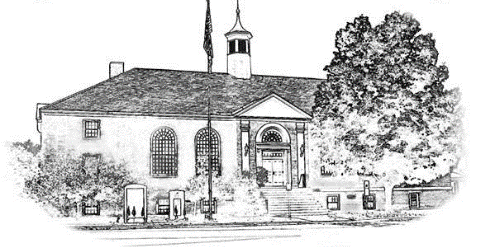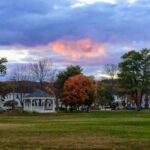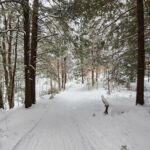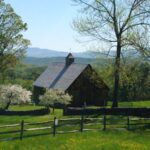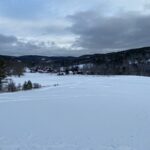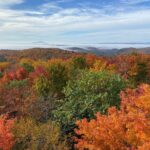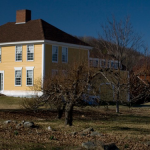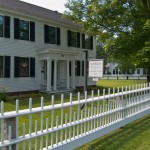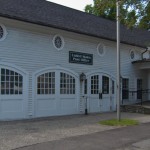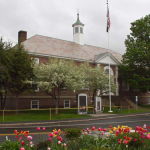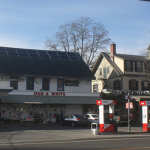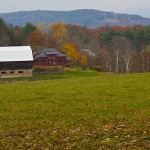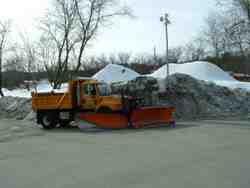 Open Bids & Projects – use this link
Open Bids & Projects – use this link
Winter Road Maintenance Policy
The Norwich Highway Department’s Winter Maintenance Policy is based on the goal of obtaining safe highway travel surfaces during winter months. It is our goal to achieve this at the earliest practical time and in the most cost efficient manner during and after a storm event. Providing bare dry travel surfaces during a winter storm event is not practical and therefore not expected.
There are many variables effecting winter maintenance operations such as type of precipitation, air and pavement temperature, traffic volume, wind, time of day, and even the day of the week. Type and volume of traffic and road gradient are the primary factors in determining the order of winter maintenance service. Therefore, during periods of time when school is in session, top priority is given to clearing roads utilized by the school buses.
Emergency service buildings shall receive necessary maintenance to provide for emergency personnel to arrive and for vehicles to depart and return safely. As necessary, snow and ice control equipment shall be redirected by the Public Works Director from assigned routes to assist emergency response vehicles in reaching the destination. Roads heavily used by commuters and hills are next in priority.
Each winter storm event is unique. It is impractical to develop specific rules on winter maintenance operations. Therefore, the judgment of the Public Works Director often governs the quantities and type of applications used to control snow and ice. Public safety is always our top priority. It is the intent of the Department of Public Works to use the minimum de-icing or anti-icing material needed to restore safe travel conditions as soon as practical following termination of winter storms. Salting and sanding units are equipped with calibrated mechanical spreaders that accurately control the application rates of materials (Please see the Snow and Ice Control Plan Salt Application Rates Chart). Employees are instructed in the proper dispensing of the necessary quantity at the appropriate time.
Department of Public Works: Call Outs
The Department of Public Works regular working hours are 7 a.m. – 3:30 p.m., Monday through Friday. All DPW employees are on call 24 hours per day, 7 days per week from November 15th through April 15th. In the event of a winter storm that occurs during evening or weekend hours, the Norwich Police Department will advise the Public Works Director of the changing road conditions. All DPW employees will be called in to maintain roads at the discretion of the Public Works Director based on the time of day, condition of the roads, and the predicted duration and intensity of the storm.
Roadway Types
The winter maintained Town roadways are comprised of three roadway types as follows:
Type 1a: Main Runs:
These roadways consist primarily of Main Street, Beaver Meadow Road, Turnpike Road, New Boston Road, Union Village Road, Goodrich Four Corners Road, and Route 132. They should have full width bare pavement as soon as practical after a winter storm terminates.
Type 1b: Other (Hills, Primary Access):
These are the hill areas and consist of Glen Ridge, Brigham Hill, Willey Hill, Bradley Hill, Hogback Road, Elm Street, and McKenna Road. They should have full width bare pavement as soon as practical after a winter storm terminates.
Type 2: Residential and Other Roads:
These are all other roads. They should have some bare pavement as soon as practical after a winter storm terminates.
Type 3: Gravel Roads:
Roadways of which snow-covered is deemed acceptable.
These designations have been determined by traffic primarily, but have been modified to include consideration of posted speed, highway grade, truck volume, and accessibility to emergency services, school zones, and school bus routes.
Operations
Snow removal and ice control usually requires the timely application of either chemicals, abrasives, or a chemical-abrasive mixture to roadway surfaces in combination with aggressive snow plowing operations. Choice of material is dependent upon the weather and road conditions. Occasionally conditions such as low temperatures do not require material applications. Materials available include the following:
Sodium Chloride:
The use of sodium chloride (common salt) combined with snow plowing is the most effective, most economical and safest snow and ice control method currently available. Salt is most effective for melting purposes at temperatures above 20 degrees F., with reduced melting ability as the temperature drops. In general, the purpose of salt is to (1) reduce adherence of snow to the pavement, (2) keep the snow in a “mealy” condition and thereby permit nearly full removal by plowing, and (3) prevent the formation of ice or snow ice (hard pack). Salt is not intended to take the place of snowplows. It is economically and environmentally unacceptable to attempt to melt snow accumulations that can be plowed.
Abrasives:
Abrasives (sand and fine mineral aggregates) are used primarily for immediate traction on hills, curves, intersections, railroad crossings and other areas to increase traction and minimize the use of salt. Sodium chloride, calcium chloride or an appropriate mixture of the two are usually added to abrasives in amounts dependent upon existing weather conditions.
Alternative De-Icers
There is considerable research being done on new deicing chemicals. Non-corrosive and environmentally friendly chemicals, in solid or liquid form are now available but widespread use is currently limited due to the high costs and need for specialized equipment to store and dispense. The Norwich DPW has and will continue to try new products as they come on the market in an effort to provide an affordable and acceptable level of service while being environmentally responsible.
Application of De-Icing Materials
The use of chemicals, abrasives or chemical-abrasive mixtures is dependent not only on present roadway and weather conditions, but also on anticipated changes in these conditions and fiscal or logistical constraints experienced by the Norwich DPW. The effects of peak traffic periods, approaching nightfall or daybreak, precipitation type, and predicted end of storm, are considered and evaluated prior to selecting the proper materials and rate of application.
Adverse roadway conditions existing during periods of low temperatures, which are predicted to rise, would generally be treated in accordance with the recommendations for the higher temperature. If the time of day, trend and weather forecast were such that a drop in temperature may reasonably be expected, treatment would generally be in accordance with the recommendation for the lower temperature. Chemicals or abrasives should not be used at low temperatures if the pavement is dry and snow is blowing off the pavement as such use would be wasteful and may be counterproductive.
Rates of Application
Generally straight sodium chloride is the chemical of choice for most storm situations. Sodium chloride is used to prevent snow pack and ice build-up on the pavement and to aid removal of any build-up that occurs. (Please see the Salt Application Rate Chart).
Chemicals or mixes are normally applied to the middle 1/3 of pavement width and on the high side of banked curves. Spread width may be increased or decreased depending on the action of traffic. Materials are applied early in the storm so that brine develops on the pavement and prevents build-up of packed snow. It takes much less deicing chemical to remove compacted snow when the treatment is placed between the pavement/snow layer than if it is placed on top of the snow. If snow continues and accumulates on the pavement, plowing should continue and additional chemical or mix treatments should be made if compaction develops.
There are many additional circumstances, which will necessitate modification to these treatments. Some of these circumstances are:
- Rising or falling temperatures.
- When pavement is cold and dry and snow is falling, chemicals are not applied. Plowing and treatment of icy spots, if they develop, is recommended.
- An abrasive-chemical mix may be needed at extremely low temperatures, under extremely damp conditions, or on very lightly traveled highways. Under these conditions the effectiveness of salt is reduced and abrasives may be needed for traction.
Spreading Practices
Each spreading unit is calibrated to insure that selected rates of application are attained. Timing of the initial application during each storm is very critical. It should be delayed until there is sufficient accumulation on the pavement to hold and contain the material spread. However, the pavement may become glazed prior to this time and may require and earlier treatment.
Portions of each plow run are unique due to various physical conditions and will require a greater application rate or an additional application during some storms. However, these areas should be judged and treated separately and not used as a barometer to evaluate and subsequently direct complete applications over the entire section. In order to conduct an efficient operation, periodic observation of the pavement surface conditions must be performed.
Width of material spread (throw plus roll) should be restricted. Reduction of the spread width by windrowing chlorides will increase the concentration of the chemical where it is needed and therefore increase the effectiveness of the application. Spreading operations should generally be conducted at speeds less than 25 mph. Air turbulence created at speeds greater than 25 mph makes it difficult to retain all the material discharged within the desired width. Spinner and belt speeds and spread pattern must be adjusted to obtain the correct spread rate and to retain the material within the lane (s) where the additional material is required.
Snow and Ice Plan [pdf]
Special Attention for Bridges
Bridge decks normally freeze or glaze sooner than adjacent pavement sections, especially in the late fall and early winter. Special care and good judgment is required in the use of de-icing chemicals on all bridge decks.
Accumulations of snow along gutter lines and sidewalk or catwalk areas of all bridges should be removed when accumulation of snow and/or ice affects highway safety. Removal operations should commence on the high side of bridges on banked curves to minimize snowmelt and re-freezing or glazing of the travel lanes.
Plowing Operations:
Plowing operations are generally initiated after 2 inches of snow have fallen and may continue until the storm has concluded. It is expected that each plow route will take 4 hours or less to complete. Currently 4 six-wheel dump trucks, 2 1 1/2 -ton dump trucks, and a loader are used for plowing the highways. A Holder sidewalk machine is used for maintaining the sidewalks. A grader and backhoe are in reserve.
For light accumulation snowfalls and snow squalls plowing may begin immediately and may include simultaneous salting and/or sanding to provide the desired results quickly and efficiently. Snow squalls, which occur after 10 p.m. and produce only a light accumulation, may not require immediate attention because of light traffic. Such light accumulation may be cleared very early the following morning, no later than 5:00 a.m. This will be at the discretion of the Public Works Director.
Excessive overtime hours for DPW employees are also a consideration. State of Vermont guidelines for highway departments require employees to have at least four hours rest after a 16-hour shift. During a prolonged storm event we will clear all of the roads and intersections, but we may not apply sand until after a four hour or longer rest period. Hills, intersections, and curves may be done before our shift ends, depending on their condition. Widening and intersection view clearing is performed following the storm, and generally during daylight hours.
Truck-mounted snowplows and wing plows are utilized to clear pavements and shoulders of frozen precipitation. Storm intensity (generally measured in inches per hour) varies considerably in Norwich but average major snow storms are approximately one inch per hour. This one-inch per hour intensity rate and the allowable snow accumulation is used in planning the availability of equipment necessary for snow removal operations.
Frozen precipitation including sleet and the build-up of ice caused by freezing rain are special situations, and not subject to procedures indicated above. When a changeover from snow or sleet to freezing rain is predicted or anticipated, snow and/or sleet is left on the pavement to capture the freezing rain thereby preventing a glare ice situation which without question is the most treacherous condition that occurs on highways. Treatment includes applications of salt at a rate of 300 pounds per lane mile as needed throughout the storm. Heavy rain tends to wash off applied salt or sand, making it difficult to keep the pavement ice-free.
It is the policy of the DPW to perform snow removal and ice control operations in a consistent and impartial manner throughout the Town. There are a few plowing procedures that are frequently misunderstood. In an attempt to clarify our actions the following policies and procedures are explained.
Within the Town of Norwich it is important to understand that there are others involved in snow control operations. The Department of Public Works does snow removal for most of the Town, however the State of Vermont Agency of Transportation is responsible for some roadways within the Town of Norwich.
Vermont AOT is responsible for US Route 5 from the Hartford town line to the Thetford town line, Route 10A from the intersection of Route 5 to Ledyard Bridge and River Road from Ledyard Bridge to the intersection of US Route 5.
Other roads not maintained by the Norwich DPW include the following:
- Through cooperative agreement, the Town of Hartford is responsible for winter maintenance of the Norwich portions of Podunk Road and Joshua Road.
- Through cooperative agreement the Town of Thetford is responsible for the winter maintenance of the Norwich portions of Stevens Road and Stowell Road.
- Through cooperative agreement, the Town of Sharon is responsible for the winter maintenance of the Norwich portion of Mitchell Brook Road.
Mailboxes and Other Structures within the Highway Right-of-Way
Occasionally mailboxes or other devices damaged by snow plowing operations due to poor visibility, the mailbox being buried in a snow bank or the weight/volume of the snow being plowed. This damage is not deliberate and in most cases is unavoidable. At the discretion of the department, DPW will repair, replace or re-erect boxes that are located within the highway right-of-way. DPW will work with the box owners to locate the box in the safest possible location and offer advice on its design to minimize potential damage.
The replacement of a mailbox or support does not take priority over snow plowing, sanding, salting, and other high-priority maintenance operations and a postal customer may have to pick up mail at the Post Office until the mailbox is back in place.
Widening or Pushing Back Snow Banks
Following storms with heavy snowfall or when several storms result in substantial snow banking, the Norwich DPW will undertake a roadway widening procedure, which will push back the snow banks and haul snow from downtown areas. This is a necessary operation because it accomplishes the following:
- Provides room for future snow storage.
- Reduces or prevents melted snow from running out onto the roadway pavement and creating icing conditions.
- Increases safe sight distance at intersections.
- Maintains a uniform line by eliminating protrusions at driveways and intersections.
Unfortunately, there is no way to prevent depositing snow in previously cleaned driveways or walkways except to leave a hazardous projecting mound of snow. With hundreds of driveways of all sizes and descriptions along our roadways it is impossible to clear these individual drives.
Snow Hauling
After the initial storm response, it is often necessary to remove snow from selected areas of the Town. Snow hauling is done on an “as-required” basis and, typically, as time allows. Snow hauling is done primarily with Town forces and augmented by contractors. Therefore, the same personnel responsible for plowing, salting/sanding operations are also responsible for snow hauling.
Snow hauling typically begins a minimum of 12 hours after the crew is released after a storm. In general, the priorities for snow hauling are as follows: Business District, School Zones, downtown streets with sidewalks.
It must be stressed that this is a guide only. Snow hauling areas may have to be changed depending on conditions.
It is not possible to haul snow off every street. Some streets are designated “No Parking” and simply “pushed back” (i.e. with no snow hauling).
Sidewalks
Due to resource constraints and storm conditions, sidewalk plowing starts at approximately the same time as street plowing starts. Sidewalks receive winter snow control services by a distinct method. A piece of equipment specifically designed for the task is used to provide both plowing and sanding/salting services.
Those sidewalks that are kept plowed in winter are maintained in a manner similar to street plowing, according to a priority system. High priority sidewalks are those in the central business district, around schools and churches, and on other heavily traveled pedestrian routes.
Sidewalks are on an attached table. Sidewalks are plowed in the order shown, for each particular route, as resources allow. Priority sidewalks requiring attention may be serviced prior to those listed ahead of them.
Level of Service
Due to the many factors affecting sidewalk plowing, it is virtually impossible to institute a prescribed service level, as identified for streets and roads. During and following a snowstorm, sidewalk snow resources are applied to sidewalk plowing, sanding and salting on the routes established. However, depending on the storm conditions, very different results may be achieved. Currently, our goal can be stated as having all sidewalk routes completely cleared of snow within 24 hours after the end of a snowstorm, however, there will be times when sidewalk clearing may take longer due to the amount of snowfall or frequency of storms.
It is impossible to achieve the same results on sidewalks as on streets because of the very different nature of traffic. Vehicle traffic, in combination with salting and plowing, can result in bare conditions on streets. Pedestrian traffic does not assist snow control efforts on sidewalks in the same way. Sidewalk conditions are more subject to the weather and less affected by snow control efforts. De-icers are less effective on sidewalks than on streets because of the difference in traffic.
The Town’s ability to maintain sidewalks was enhanced by acquiring better equipment, but the existing conditions are still largely determined by the weather. The nature of winter weather in Norwich tends to produce freezing rain and rain, as well as snow, as temperatures fluctuate around the freezing mark. This type of weather can produce severe icing conditions on both roads and sidewalks, but the ability to control the surface conditions on sidewalks is less. Melting snow banks during the day, subsequent freezing at night, etc., can also cause more icing regardless of the number of times a particular sidewalk is salted and sanded.
It must be emphasized, however, that the conditions can be different for those sections receiving exactly the same service, after each storm due primarily to weather conditions. Once icy conditions are established, the situation tends to be compounded in a cumulative way be subsequent winter storms. The amount of effort can be great in terms of repeat applications of sand and salt when this occurs, but has little perceived impact on the surface condition of the sidewalk.
Plowing Operations
Typically, plowing on sidewalks does not commence until accumulations are in excess of two inches. Unlike street plowing conditions, a “brine sandwich” is not created by salting sidewalks as soon as a snowstorm commences.
Plowing continues according to the route until all sidewalks on the list have been completed.Plowing continues according to the route until all sidewalks on the list have been completed.Plowing continues according to the route until all sidewalks on the list have been completed. As noted previously, in severe conditions or when storms are close together or under heavy snowfall conditions, it may not be possible to complete the list before starting at the beginning again. After heavy snowfalls, the sidewalk machine may be equipped with a snow blower instead of plows to service the sidewalk routes. The machine will be slower to complete the route with a blower, but heavier accumulations can be better handled.
Speed, equipment availability, and persistence are the keys to keeping sidewalk routes maintained. The sooner a route can be cleared after a storm, the better the chances of keeping the whole route in good condition. The longer it takes to clear a route, the greater the chances for the snow to become packed, turn to ice, etc. Subsequent winter storms, rain, freezing rain, freezing temperatures, can all act to produce unfavorable conditions on sidewalks.
Once sidewalks have been plowed or cleared of snow, sanding operations commence, beginning at the top of the list. Sanding operations continue until the whole route is completed. As noted, this is the opposite sequence than that followed fro arterial and collector streets, which are salted first, then plowed, then sanded or salted after plowing ceases. The same machine handles the sanding and plowing operations on sidewalks.
Sanding may become a daily process on sidewalks once icy conditions occur. Due to the freeze/thaw cycles that can occur, sanding is the only effective operation to provide some degree of traction on town sidewalks.
Sidewalk Route:
Start at Huntley Rec. Field/Moore Lane intersection
To Main Street
Norwich Public Library
Norwich Senior Housing to Advance Transit bus stop #1
Down Main Street to Church Street to Norwich Congregational Church
Dan & Whit’s parking lot / Advance Transit bus stop #2 to Elm Street
Elm Street along Route 5 to traffic light
10A to Ledyard Bridge
From Ledyard Bridge (second sidewalk) to Montshire Road
From Norwich Gateway Condominium to Marion Cross School (including walkway to bandstand)
Beaver Meadow Road to Huntley Street
Parking Lots
Due to resource constraints and storm timing, only the parking lots at Tracy Hall, the Police Station, and the Fire Station are plowed during a storm. All other parking lots are generally not plowed until the end of the storm.
Priority one: Police Station
Fire Station
Priority two: Tracy Hall-North Side
Tracy Hall-South Side
Priority three: Huntley Rec. Field / Park and Ride
Transfer Station / Recycling Center
Norwich Public Library
Ballard Trail Parking
Parcel 5
Gile Mountain Fire Tower Parking Lot
Town parking lots receive winter snow control services by two distinct methods. Tracy Hall, the Police Station, the Fire Station, and the Library are part of a primary route, providing both plowing and sanding / salting services. All other parking lots are plowed when a piece of equipment becomes available.
Level of Service
Due to the many factors that affect the plowing of parking lots, it is virtually impossible to institute a prescribed service level, such as identified for streets. Following a snowstorm, all snow resources are applied to streets and sidewalk plowing, sanding and salting on the routes established. However, depending on the storm conditions, very different results may be achieved. Currently, our goal can be stated as having all parking lots completely cleared of snow within 24 hours after the end of a snowstorm.
It is impossible to achieve the same results in the parking lots as on streets because of the very different nature of traffic. Vehicle traffic, in combination with salting and plowing, can result in bare conditions on streets. Vehicle traffic within a parking lot does not assist snow control efforts on parking lots in the same way. Parking lot conditions are more subject to the weather and less affected by snow control efforts. De-icers are less effective in parking lots than on streets because of the differences in traffic.
The level of service can only be stated in terms that snow plowing/sanding and salting activities begin in the parking lots after every storm and continue until completed or another storm intervenes.
Plowing Operations
Typically, plowing in parking lots does not commence until accumulations are in excess of three (3) inches. Access routes through the parking lots are plowed through by plow trucks as they pass through to allow access. Unlike street plowing conditions, a “brine sandwich” is not created by salting parking lots as soon as a snowstorm commences.
Plowing continues according to the priorities until all parking lots on the list have been completed. As noted previously, in severe conditions or when storms are close together, it may not be possible to complete the list before starting at the beginning again. After heavy snowfalls, the loader with plow may be required to service the parking lots.
Speed, equipment availability, and persistence are the keys to keeping parking lots maintained. The sooner a lot can be cleared after a storm the better the chances of keeping the whole lot in good condition. The longer it takes to clear a parking lot, the greater the chances for the snow to become packed down, turn to ice, etc. Subsequent winter storms, rain, freezing rain, freezing temperatures, can all act to cause unfavorable conditions in the parking lots.
Sanding and Salting Operations
Once the parking lots have been plowed or cleared of snow, sanding operations may commence.
Sanding may become a daily process in parking lots once icy conditions occur. Due to the freeze/thaw cycles that can occur, sanding is the only effective operation to provide some degree of traction in town parking lots.
Nighttime Snow Hauling
- Main Street from the Upper Hazen Street intersection to the crosswalk on Route 5 just before the traffic light.
- Beaver Meadow Road to the Hopson Road intersection
- Elm Street to Jones Circle
- Hazen Street to the Advance Transit bus stop
Daytime Snow Hauling
- Fire Department parking lot
- Tracy Hall-both sides
- Trumbull Lane
- Carpenter Street
- Lary Lane
- Jones Circle
- Elm Street to the 4-way intersection
- Any other areas deemed necessary by the Public Works Director
Disposal site:
The dumpsite for snow removal from municipal lots and streets is located at the upper lot behind the Norwich Public Works Building.
